Gustav Winter left Germany in 1913 and emigrated to Argentina. He got to Spain in 1915, and, once there, he completed his studies and had several jobs in different areas. Between 1926 and 1929, he was the Managing Director of the CICER —Compañía Insular Colonial de Electricidad y Riegos— and led the construction of the headquarters of Alfonso XIII in Las Palmas de Gran Canaria.
During that time, he worked on an industrial project that was to be carried out by the company in Jandía (in Fuerteventura) and he had some negotiations with the owner, Mr. Enrique de Queralt, Count of Santa Coloma. However, in the end, the company didn’t purchase the land or go ahead with the project. Nonetheless, Gustav Winter kept the project for himself and intended to go ahead with it independently, one decade later.
Why an interest in Jandía? The peninsula of Jandía offered certain advantages, among others:
- Its proximity to the rich Canarian-Saharan fishing bank is paramount for its project to make and export fish flour, tinned tuna, and sardines.
 Fisherman in 1962
Fisherman in 1962
 Natural port of Morro Jable
Natural port of Morro Jable
- Due to the favourable conditions of the natural port of Morro Jable, sheltering the northern wind. In this area, a dock could be built affordably, to load and unload vessels, avoiding having to go on long journeys for this purpose
- As opposed to the difficulties posed when carrying out electrification and irrigation works in Gran Canaria (CICER, 1926-1929) where “you had to deal with different owners every 50 meters”, in the Península of Jandía -there was only one owner of almost 20,000 undivided hectares- an advantage for his industrial project: building a shipyard for fishing vessels, wind turbines and an electrical plant, making ice and tin leaf containers to make and preserve fish flour.
- Also, to the wonderful weather conditions, sunny and windy weather, for salt production at the saltworks, which, together with fish fat and oil, helps manufacture soap.
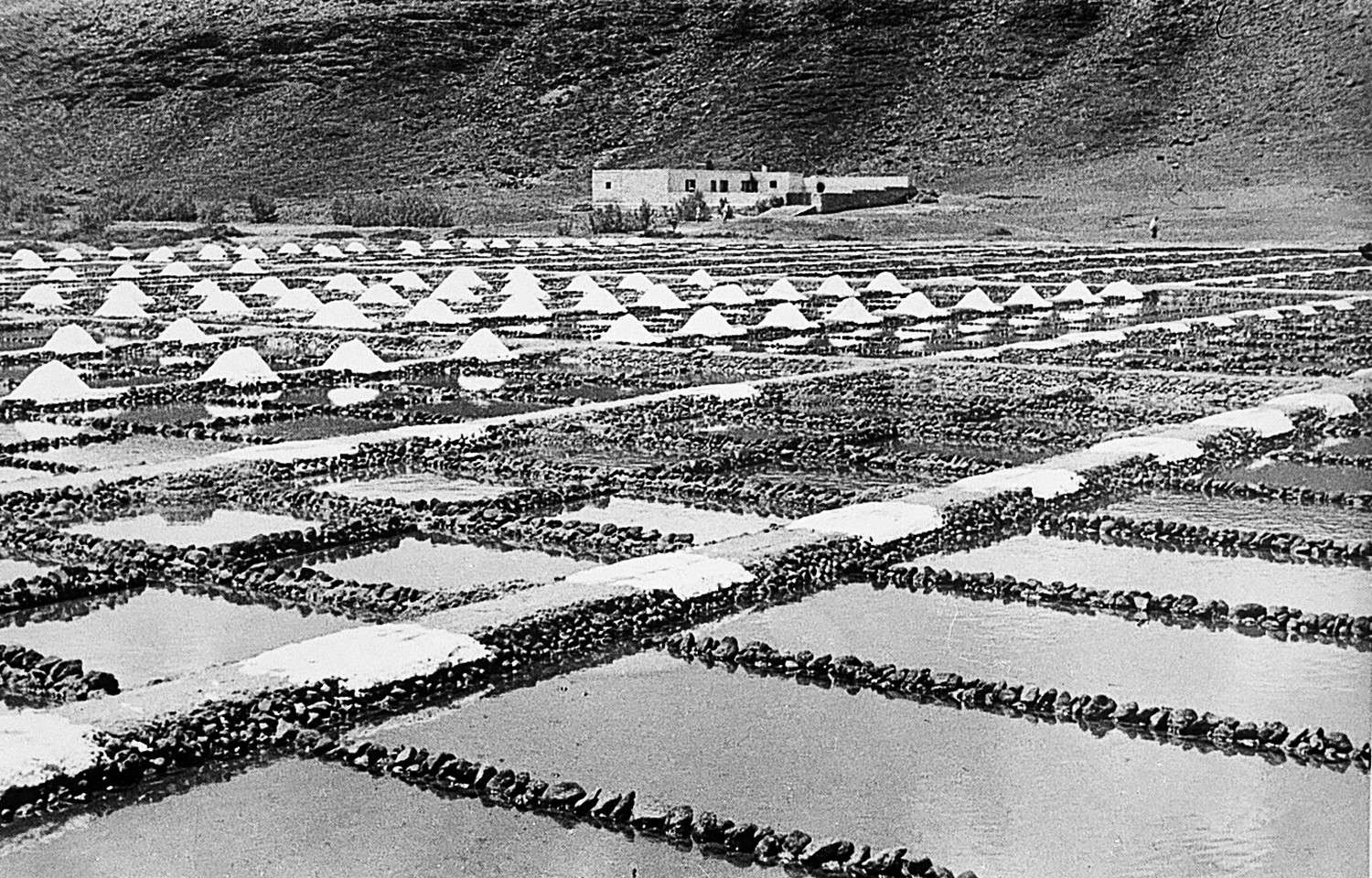 Saltworks
Saltworks
 Saltworks of El Matorral
Saltworks of El Matorral
-
Furthermore, due to such appealing raw materials, scarce on other islands, like good quality limescale rock, the specific sand from the coasts, and the suitable soil and sand to make a type of volcanic concrete that is salt-water resistant.
They had to wait until 1937, when the contract with the previous lease holder, Mr. Déniz, was up, to sign the leasing contract with the peninsula of Jandía —since the Gil Robles Law of 1935 prevented foreigners from purchasing the large properties—
1938
In the summer of 1938, Gustav Winter was in the Canary Islands at the same time as the fishing expedition led by Richard Ohlrogge from the deep-sea fishing company Nordsee. Several experts would come over, such as a marine biologist, an expert in the tinning industry, an engineer to research the future pier, and an agronomist. The expedition aimed to conduct some research on the fishing grounds of the Saharan fishing bank, to mark the most appropriate spot to build the dock to unload ships (in the Morro Jable, Sotavento area) and look into agricultural and mineral-related potential. Said expedition was suspected to have had a hidden agenda.
During his stay in Fuerteventura, he contacted and hired Mr Salvador Falero (Casillas de Morales), who, from September of that year, became his legal representative and person in charge of everything related to the cattle industry, agriculture, construction of ditches, improvements being made to water galleries and reforestation. In Gran Canaria, he met with Mr. Alberto Langenbacher, whom he knew from having worked at CICER. The following year, he moved to Jandía and was his trusted man.
The group of German people who started working in Jandía in 1939
In 1939, Gustav Winter focused on getting the necessary funds for his project and he set up the Atlantische Industrie Gesellschaft (A.I.G.) in Germany.
The AIG, registered at the Commerce Register, ref 563 B 56660, whose social objective was “the creation and exploitation of fishing, metallurgic, chemical and pottery-related companies, nationally and internationally, mainly in the Canary Islands.”
1941
In 1941, the issues with the first leasing contract were solved. Thanks to the handling of his friend and partner Mr Manuel Girona, he managed to gather all the undivided parts of the land, which were scattered among different people before, and were now only handled by Mr Alfonso de Queralt y Gil Delgado, Count of Gerena, and Mr Angel Fiat. On 8/5/1941, Mr Manuel Girona set up Dehesa de Jandía S.A. (DJSA), purchasing the land from them and ratifying the leasing contract to Gustav Winter, with the option to purchase. That same day, the company Atlántica Comercial (ACSA), was set up, with Manuel Girona and Gustav Winter as main shareholders. They signed a private agreement and both moved to Jandía in September 1941 to check out what the situation was like and to get some of the work underway.
 Gustavo Winter and Manuel Girona oct 1941
Gustavo Winter and Manuel Girona oct 1941
 Gustavo Winter, Falero and Langenbacher sept 1941
Gustavo Winter, Falero and Langenbacher sept 1941
Photos courtesy of Gabriela Häbich
Gustav Winter stayed there for a month. In Cofete, he demarcated the land and marked the area where the house would later be. He chose a spot that was close to a natural water stream (known as “Mina de Cofete”, located in Huerto de La Palma. The house would be located approximately 500 metres away from the mine, at a lower height. Therefore, using a draining pipe, which still stands, the water would flow easily toward the house. On that same spot there used to be grain storage. Shortly after, the work to prepare the land commenced (the house is placed on a slightly sloped hill) as well as the first foundation work. Gustav Winter didn’t return to Fuerteventura until August 1947.
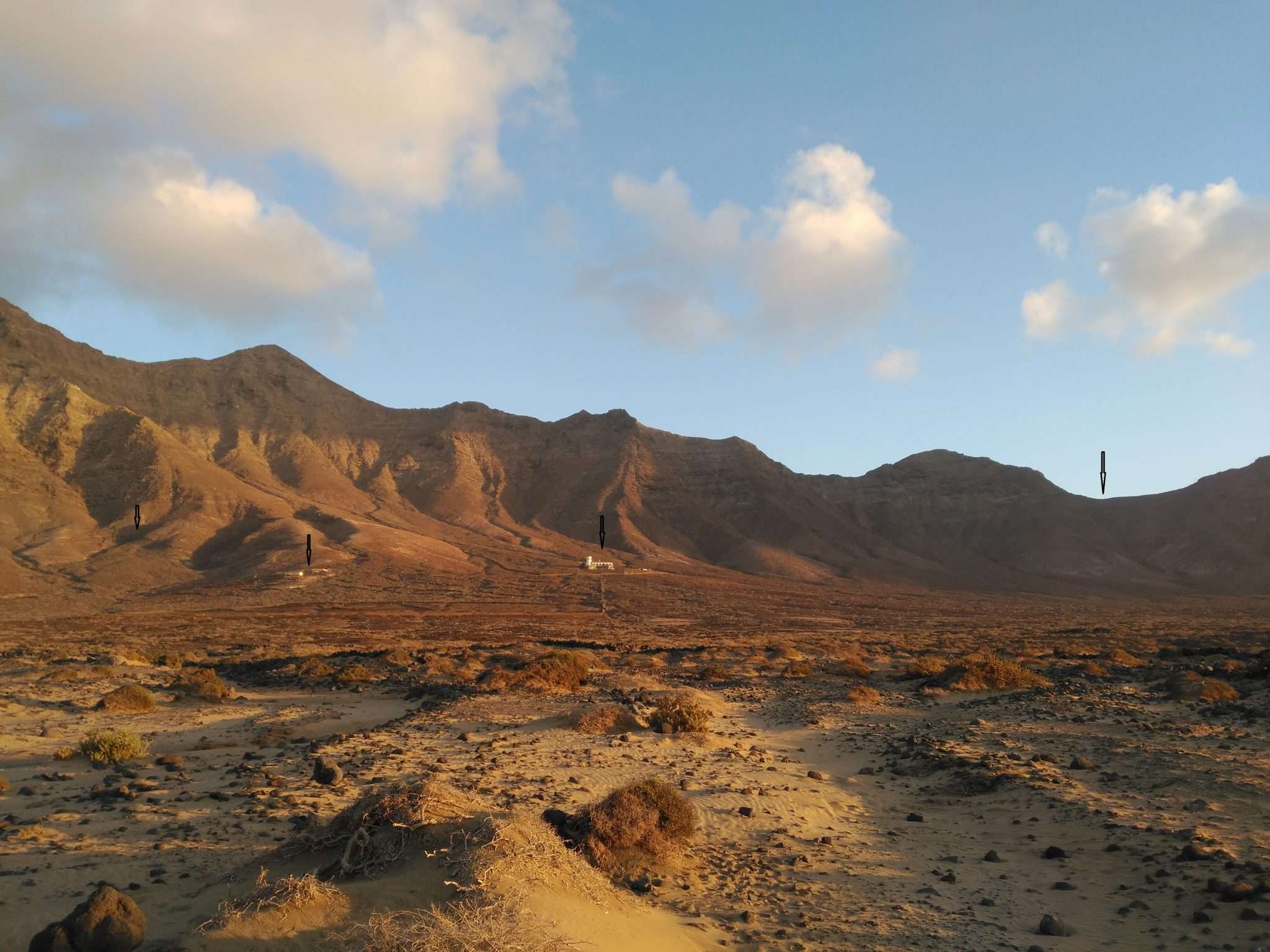 From left to right we can see, first of all, and at a higher level than the house is, the mine or water gallery in Huerto de La Palma (in the skirt of Pico de La Palma); next, the Agua Camellos store and house; the chalet, and eventually, the Degollada de Gran Valle and the access on foot to Cofete.
From left to right we can see, first of all, and at a higher level than the house is, the mine or water gallery in Huerto de La Palma (in the skirt of Pico de La Palma); next, the Agua Camellos store and house; the chalet, and eventually, the Degollada de Gran Valle and the access on foot to Cofete.
1942
In 1942, due to the continuation of the War and all sort of difficulties, much of the work being carried out in Jandía was interrupted. For instance, the foundation work of the house that had just recently started (in letters numbered 3 and 11 from 21st and 22nd March 1946, from Gustav Winter to the DJSA Administration in Morro Jable, there is mention being made to such absence in Jandía since 1941, and the interruption of the work being done).
Gustav Winter spent the 2nd World War between Mölln, where the AIG had its headquarters and part of their machinery and facilities purchased, France and Barcelona, where he had business with his friend and partner Mr Manuel Girona and Fernández Maquieira. In 1941, they both set up the company “Atlántica Comercial S. A.” (ACSA) with its headquarters in Barcelona.
1945
In May 1945, the 2nd World War came to an end in Europe with the unconditional surrender of Germany. Back then, Gustav Winter was a German citizen living in Madrid since the end of 1944 and had several interests in Spain (Catalonia, the Basque Country and Jandía). He wasn’t requested to be repatriated, but he did come under investigation on behalf of the “Representatives of the Allied Board Control over Germany” in Spain, comprising the French, British and American Embassies. They suspected that the AIG was deep down a cover of the German government being used for different purposes. Hence it figuring in some of the “black lists” drafted by the allies.
In addition, on 8/5/1945, according to the compliance of the Bretton Woods agreements, the Spanish law on property seizing came into effect. Subsequently, the company ACSA, which Gustav Winter and Manuel Girona were main shareholders of, was intervened by the Foreign Goods Blockage Service. Toward the end of 1946, it was considered “exempt.” (courtesy of José Luis Abaroa)
With such administration workload he was faced with, he needed the help of someone who mastered German and Spanish. Therefore, in June, he met Isabel Althaus, who had lost her job as journalistic liaison officer between Portugal and Germany, when the War finished. She had some savings, and wasn’t thinking about going back to Germany, which was then destroyed by the War. They initiated a professional relationship that soon turned into a personal one.
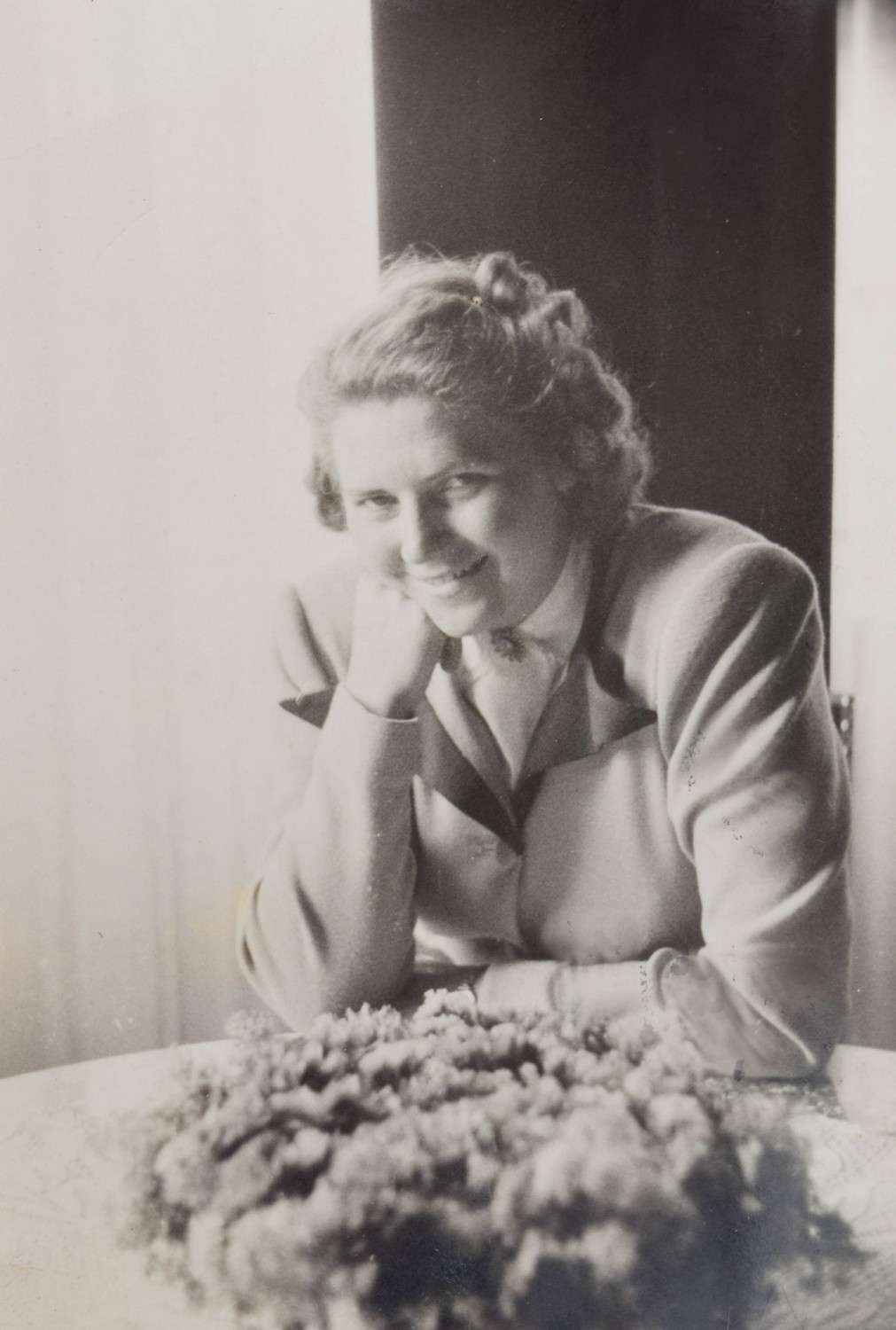 Isabel Althaus - 1946 - Madrid
Isabel Althaus - 1946 - Madrid
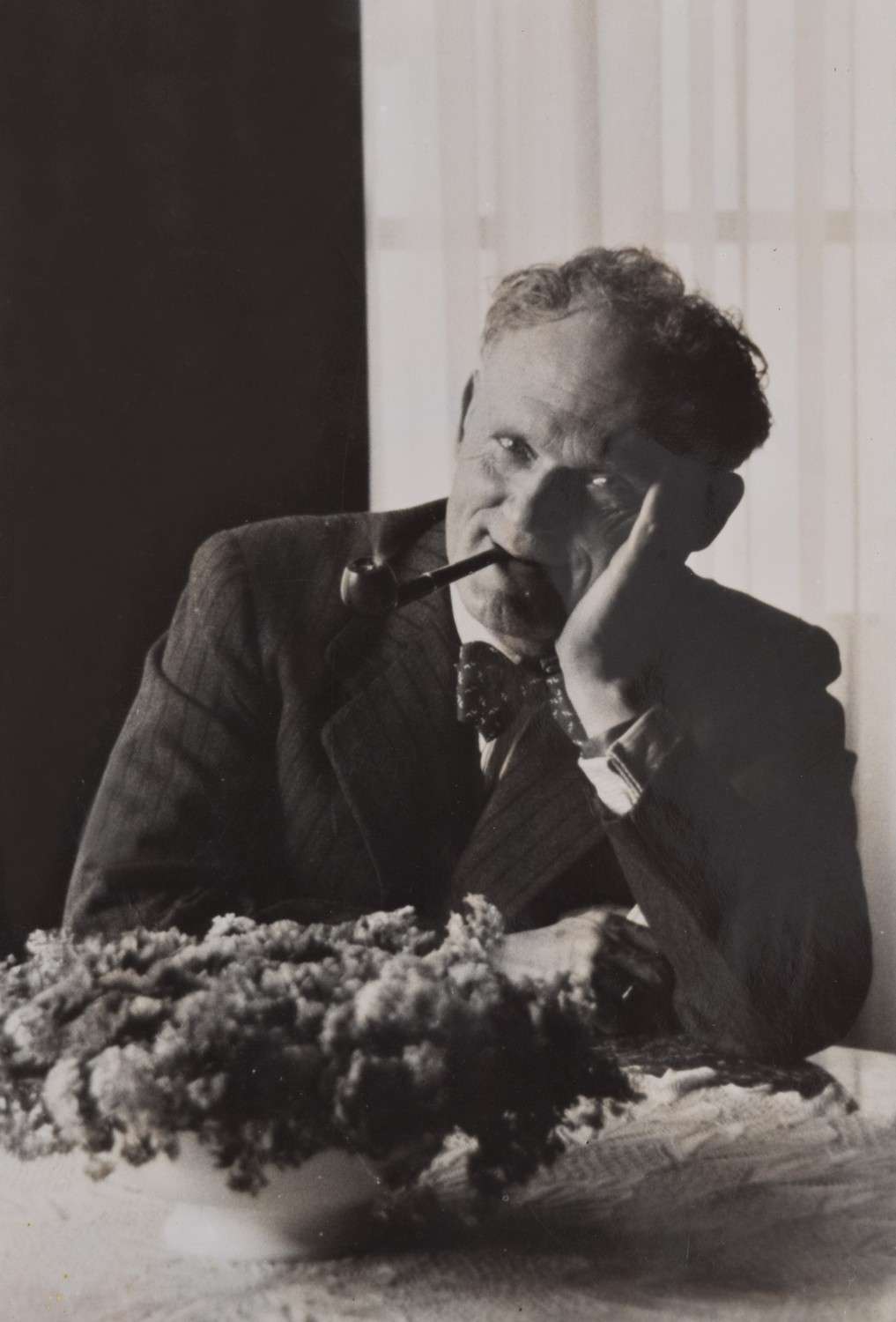 Gustavo Winter - 1946 - Madrid
Gustavo Winter - 1946 - Madrid
1946
– In March 1946, he started to take care of Jandía again.-
For almost a year, he focused on “defending” himself, trying to prove his settling in Spain since 1915, where he had lived for most of his adult life, and where the four children of his first marriage had been born, and where he had also worked on different business projects. Gustav Winter stood out for his great belief in being able to overcome stumbling blocks and getting over difficult challenges, so in the spring of 1946, he regained his interest in Jandía. After five years away from it, he started to regularly exchange letters —the numbered letters show that the CORRESPONDENCE had just started— with those in charge of Dehesa de Jandía S. A. in Las Palmas —Mr Arturo Kamphoff— and in Jandía —Mr Alberto Langenbacher and Mr Guillermo Schrauth—. In Jandía, only two activities had taken place in the last few years: cattle industry and harvest-related activities, since the other works ceased in 1942.
In these first letters —numbers 3, 4, 6 and 11, from 21 and 22/3/1946 from Gustav Winter: “The leaseholder of Dehesa de Jandía”— is interested in the overall situation of the property and the neighbouring areas: they would like to know how many people lived there back then, the conditions they were under, health conditions, whether there had been visits on behalf of the authorities, fishing activities, harvesting, cheese production, the condition of the garden centres and the reforestation toward the early 40’s, as well as the condition of the walls protecting that forest area and access to the cattle. There was also an interest shown in the production of concrete on the island, water channels, rainfall and the state the paths were in, quotations are requested in order to complete them. Since the idea was to build the house in Cofete, and materials would have to be taken there, in this letter he mentioned: “I’m especially interested in a path to bring the van all the way to Cofete”. He was interested in a quotation to dig a tunnel in the mountain through Gran Valle. This was eventually ruled out, and it wasn’t until 1950 that it became possible to get to Cofete by vehicle, a long way heading west toward Punta de Jandía, going through Degollada around Valle de las Pilas, and then heading east toward Cofete and to the house. He also requested a quotation for a small pier in Morro Jable, since the one that had started years prior, had been lost.
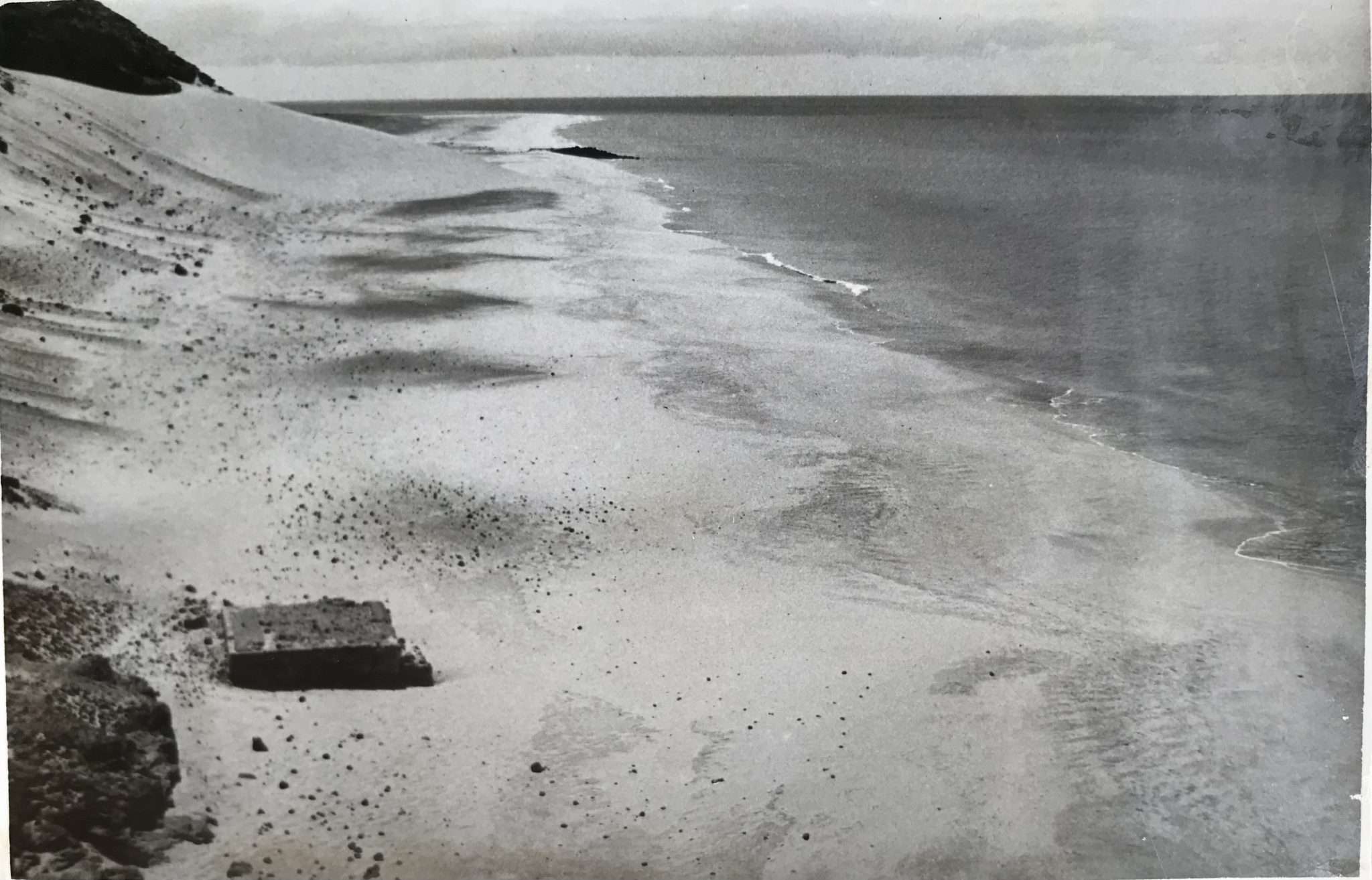 In the distance, the remains of the small port.
In the distance, the remains of the small port.
He received an answer to the two requests in the letter dated 19/7/1946 signed by Mr Alberto and by Mr Guillermo, enclosing the two quotations. There are several handwritten notes on the margin of this letter received by Gustav Winter.
There are several quotations: to build the pier in Morro Jable, for a stretch of road to connect the end of Gran Valle ravine to the entrance of the tunnel (south); another one to dig a 110-m tunnel to connect Gran Valle with Cofete; access from the entrance of the tunnel on the north side (Cofete) to where the house was; and others to link the house to the town of Cofete (Casa Blanca, 1.7 Km away), and another one to bring water from other natural streams in Cofete (Chupadero and Culantrillo) to the town of Cofete. In addition, there was another one to build a fencing wall around the house. Lastly, there was a quotation to COMPLETE THE FOUNDATION WORK OF THE HOUSE OF COFETE and another one for the corresponding MASONRY WORK.
Those quotations were issued and dictated by those who signed them, but typed by Mr Guillermo or Mr Alberto, and then signed by the issuers. As followed:
- Quotations submitted by Mr Juan Concepción Villalba: completion of the foundation work of the house; masonry work on the house; drilling of the Gran Valle tunnel; road from Gran Valle ravine to the entrance of the tunnel on the south; a road from the northern entrance of the tunnel to the location where the house was; a road from there to the town of Cofete (Casa Blanca) and a quotation for a pier in Morro del Jable.
- Quotations submitted by Mr Faustino Arucas: a water draining pipe from Chupadero and Culantrillo streams to Casa Blanca and a quotation for a fencing wall for the house.
- Quotations issued by Cofete neighbours and medianeros, signed by Mr Silvestre Francés Hernández, for two paths in Cofete.
The pier was never built. The work digging the tunnel was never resumed either, since it brought along plenty of difficulties back then, and they decided to build the current road to Cofete in the forthcoming years (see details in the Different Access Points to Cofete section).
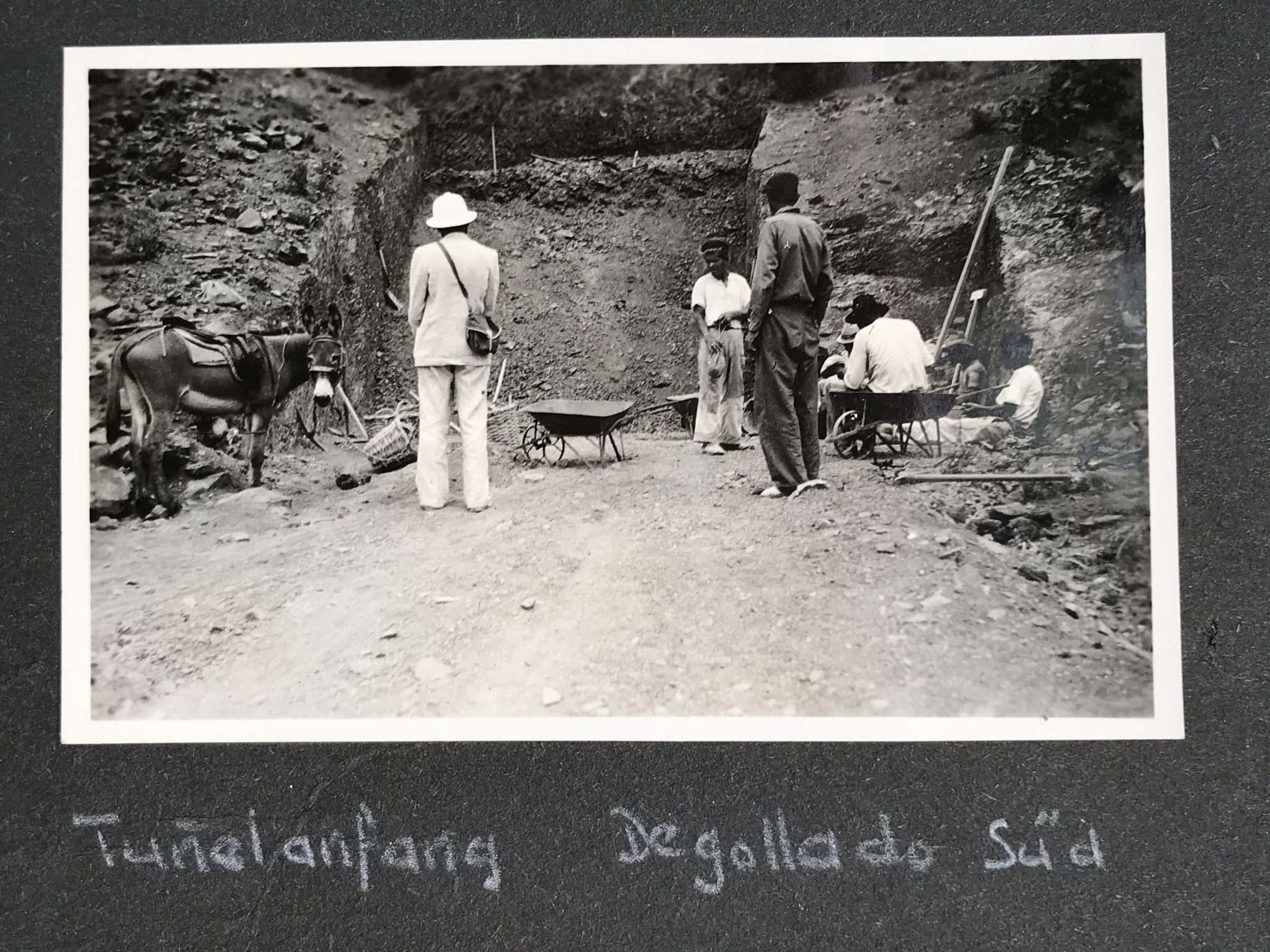 It was impossible to build a tunnel that was more than 100 metres long, cutting across Gran Valle mountain with the means available: a spade and shovel and some dynamite, that was quite hard to find back then.
It was impossible to build a tunnel that was more than 100 metres long, cutting across Gran Valle mountain with the means available: a spade and shovel and some dynamite, that was quite hard to find back then.
The foundation and main work carried out at the house, was done by Mr Juan Concepción Villalba. In the section Construction, the work carried out and the progress of said work, can be seen in detail.
Regarding the investigation conducted by the Board of the Allied Board Control over Germany, Gustav Winter managed to prove his roots in Spain since 1915, he documented how the AIG got its capital, and the “Common Law on total freedom reintegration file” was also favourably solved –of public access and work at the Ministry for Foreign Affairs-. In the summer of 1948, after being granted his residency in Spain, he permanently moved to Fuerteventura. He got his Spanish nationality ten years later, in 1958.

